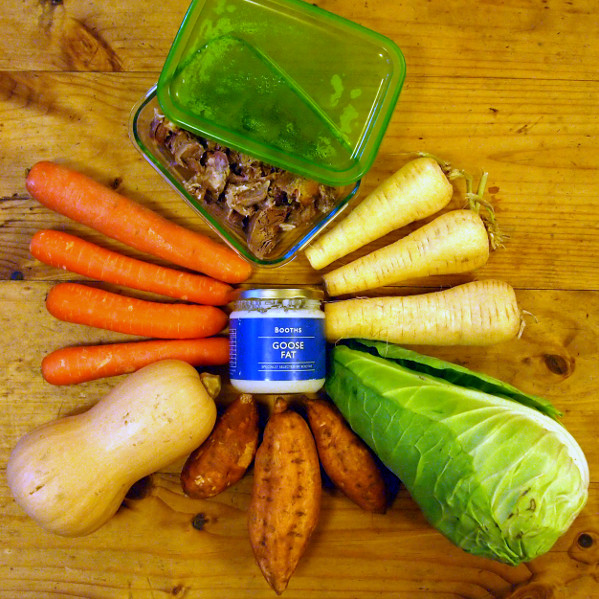Before I discovered the Whole30, I had already dismissed Paleo as being total and utter nonsense.
My first impression of Paleo had been of a diet where you could eat lots of indulgent cakes and bakes, all day, as long as they were made out of super expensive* ‘Paleo’ ingredients, and (Abracadabra!) you would lose a lot of weight.
Well (you may be relieved to hear) that interpretation of Paleo didn’t make an awful lot of sense to me.
I know I’m not alone in misunderstanding the Paleo diet. Some people are stuck on the idea that you are only allowed to eat the food that would have been available to a caveman, some people think Paleo involves eating mainly nuts and seeds, and yet other people believe Paleo to be purely a protein and meat diet.
Another misconception is that Paleo is specifically a weight loss diet, whereas it is more accurate to consider Paleo as ‘a way of eating’. I have got to the point where I now feel odd giving it a name – it really is just the way I eat, and the way I will always eat in the future. However it makes sense to use the name ‘Paleo’ here on the blog, because it easily identifies the subject matter of the Paleo related posts both for search engines and for you, the reader.
So, what is the Paleo diet?
In short… Paleo is a diet of nourishing meals made from real food: meat, fish, eggs, vegetables, fruit, nuts and seeds.
Paleo is Gluten Free, Wheat Free and Grain Free.
Paleo is Sugar Free. (but definitely no artificial sweeteners)
Paleo is Dairy free.**
No Legumes, including Soya products.
No overly processed foods. Home made is good.
Paleo is all about eating good quality food. Pastured meat, free range eggs, non-farmed fish, organic, local, etc…
Paleo is particular about the fats used in cooking.
- Examples of good fats are: Coconut Oil, Goose fat, Olive Oil, Ghee, (some Paleo people use butter but others don’t.)
- Examples of bad fats are: Rapeseed oil, Sunflower, soya, (etc), and any margarine or ‘spread’.
Meat doesn’t need to be the leanest available, and chicken can be cooked with the skin on. Fat = Taste.
People who eat a Paleo diet are not afraid of adding fat to their food. They eat home made mayonnaise, nuts and avocados. They put extra virgin olive oil on salad and butter on potatoes.
This is the way I follow the Paleo diet, other people might do something slightly different. (That’s just how it is.)
I eat three meals a day. I aim to eat sufficient at each meal to carry me to the next meal 4-6 hours later.
Each meal is based around a generous helping of good quality protein: Meat, fish or eggs. I still stick to the Whole30 portion sizes… so I’m looking at something at least the size of my palm eg: 1 pork chop, 4oz beef mince, 3 eggs, or I cod fillet.
The rest of my plate is filled with vegetables. I eat a lot of vegetables! Sometimes salad, sometimes steamed veg, always lots of colours, maybe a small helping of new potatoes or a sweet potato mash. I try to remember to add homemade sauerkraut on the side and I might also eat a piece of fruit.
I tend to be predictable about breakfast and eat eggs most days, but that suits me fine. I’m on my own for lunch, so lunch is often leftovers from the day before. The evening meal is a family meal so it’s the main meal of the day, and I deliberately make too much food – to make sure there are leftovers to put in the fridge.
I drink black coffee, Earl Grey tea with lemon, fizzy water, camomile tea, and traditional milky English Breakfast tea. I don’t drink alcohol.
So… That was a quick run through of the main points of the Paleo Diet and certainly doesn’t cover everything. You probably have a few questions? Go ahead, ask your questions about Paleo in the comments section below and I will answer them.
I will be talking about Paleo in more depth in the future. eg:
- The health benefits of a Paleo Diet
- Budgeting for a Paleo Diet
- How Paleo helped me to lose weight
- Shopping and produce guides – eg. meat quality, stocking the larder, what is in my fridge…
- Everyday recipes – and the meals that I eat.
If you have any suggestions for future Paleo related posts, feel free to put those in the comments section too.
* As an example, almond flour, coconut flour and honey are expensive to buy in England – particularly when needed in the quantities used in some of these ‘Paleo’ recipes.
**I use a very small amount of full fat organic milk – at most 1 pint per week – many paleo people use Coconut milk instead of cows milk, but that isn’t an option for me because it gives me stomach pain and nausea.

